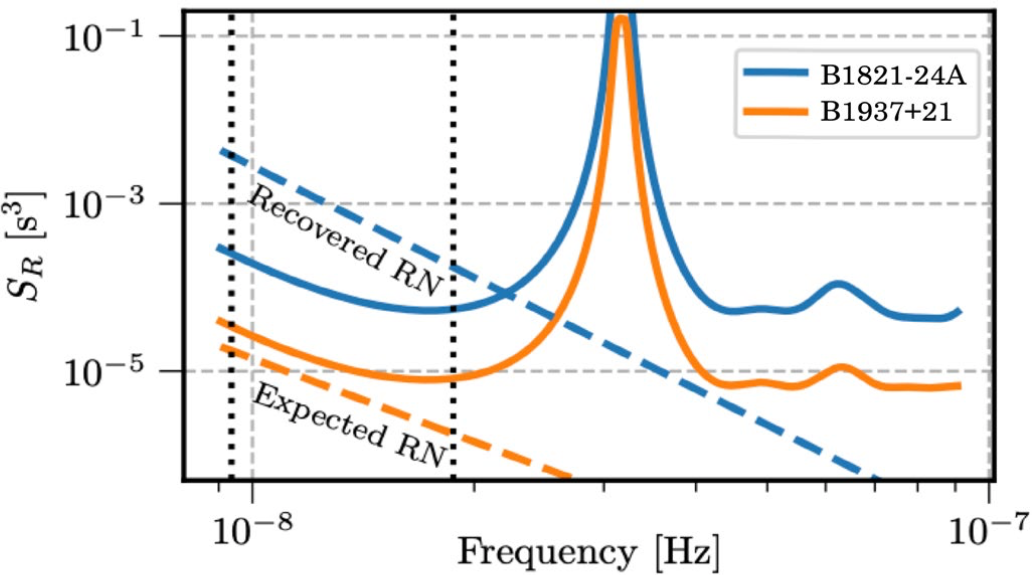NICER / ISS Science Nugget
for April 28, 2022
Assessing the stability of Nature's best clocks
The most rapidly rotating neutron stars, spinning at hundreds of revolutions per second, are so stable in their rotation that they are exquisite timepieces, rivaling the accuracy of our best Earth-based atomic clocks on timescales of months to years. From the outset of its mission, one of NICER's key science goals has been to evaluate the intrinsic stabilities of these millisecond-period pulsars (MSPs) as clocks.
Dozens of MSPs are routinely observed with ground-based radio telescopes, for reasons that most notably include searching for low-frequency gravitational waves produced by supermassive black holes in the cores of distant galaxies (among other processes). Only a subset of these ~100 MSPs are also seen to pulse at X-ray wavelengths, but their study is valuable because the propagation of radio waves through the ionized interstellar medium delays the radio signals in unpredictable ways; X-rays are immune to this effect, so that pulse timing studies carried out with NICER directly probe the intrinsic stability of neutron star rotation and emission, without complications due to interstellar propagation.
A new study by Dr. Jeffrey Hazboun (Univ. of Washington Bothell) and collaborators, published in The Astrophysical Journal, describes an analysis of 3.5 years of NICER observations, acquired approximately weekly, for two MSPs, PSR B1821-24A and PSR B1937+21, which spin at 327 and 642 revolutions per second respectively. This investigation detected for the first time long-term instability in the X-ray pulse timing of B1821, while setting an upper limit on timing-noise fluctuations for B1937. These measurements can serve as "ground truth" for radio observations, to gauge the efficacy of methods used to remove or mitigate time-varying propagation delays in the radio signals between the pulsars and Earth. NICER will continue to monitor these MSPs and others for the duration of its operations on ISS.

Figure: NICER's sensitivity (SR) to low-frequency "red" noise (RN; solid curves) in the timing stability of two pulsars yields the first X-ray measurement of RN, for PSR B1821-24A (blue dashed line) on > 1-year timescales. Despite greater sensitivity, RN predicted for PSR B1937+21 from radio measurements (orange dashed line) is not yet detected, but is anticipated with a 3-year-longer data baseline.
<< Previous
Main Index
Next >>